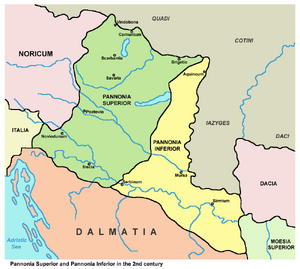Scordisci
| Author:Laxman Burdak, IFS (R) |

Scordisci were a Celtic Iron Age cultural group centered in the territory of present-day Serbia, at the confluence of the Savus (Sava), Dravus (Drava), Margus (Morava) and Danube rivers.
Variants
- Skordiskoi (Greek: Σκορδίσκοι)
Jat clans
Origin
The Scordisci were a Celtic group formed after the Gallic invasion of the Balkans,[1] or rather a "Celtic political creation"[2] having mixed with the local Thracians and Illyrians.[3] Their tribal name may be connected to the Scordus, the Šar Mountain.[4]The personal names are noted to have been subsequently Illyricized, having South Pannonian–North Dalmatian influence.[5] According to onomastic evidence, Scordiscan settlements to the east of the Morava River were Thracianized.[6] In parts of Moesia (northeast Central Serbia) the Scordisci and Thracians lived beside each other, which is evident in the archeological findings of pits and treasures, spanning from the 3rd century BC to the 1st century BC.[7]
The Scordisci were found during different timelines in Illyria, Thrace and Dacia, sometimes splitting into more than one group like the Scordisci Major and the Scordisci Minor.[8]
Extensive La Tène type finds, of local production, are noted in Pannonia as well as northern Moesia Superior, attesting to the concentration of Celtic settlements and cultural contacts. However, such finds south of the Sava river are scarce.[9]
Genetics
Patterson et al. 2022 analyzed one Late La Tène 150-50 BCE sample of a 25-35 male adult from grave which contained weaponry and dog skeleton in today's town of Osijek, Croatia. He carried the Y-DNA haplogroup R1b-V88 (> R-BY17643[10]) and mtDNA haplogroup J1c12. In a three-way admixture model, he approximately had 53.5% Early European Farmers, 38.3% Western Steppe Herders and 8.2% Western Hunter-Gatherer-related ancestry.[10]
Legacy
The Scordisci are regarded as the founders of Belgrade.
History
They were historically notable from the beginning of the third century BC until the turn of the common era, and consolidated into a tribal state. At their zenith, their core territory stretched over regions comprising parts of present-day Serbia, Croatia, Bulgaria and Romania, while their influence spread even further. After the Roman conquest in the 1st century AD, their territories were included into the Roman provinces of Pannonia, Moesia and Dacia.
External links
See also
References
- ↑ Wilkes, John J. (1992). The Illyrians. ISBN 0-631-19807-5. p. 84
- ↑ Mócsy, András (2014) [1974]. Pannonia and Upper Moesia: A History of the Middle Danube Provinces of the Roman Empire. New York: Routledge. ISBN 9781317754251. p. 12
- ↑ Dáithí Ó hÓgáin (2002). The Celts: A History. Boydell Press. p. 60. ISBN 978-0-85115-923-2. "."
- ↑ James Cowles Prichard (1831) [1831]. The eastern origin of the Celtic nations proved by a comparison of their dialects with the Sanskrit, Greek, Latin and Teutonic languages. ISBN 0-543-79440-7.
- ↑ Mócsy 1974, p. 66
- ↑ Mócsy 1974,
- ↑ Valeriu Sîrbu, Sabin Adrian Luca, Cristian Roman (January 2007). "Tombs of Dacian warriors (2nd-1st C. BC) found in Hunedoara-Grădina Castelului (Hunedoara County)" (PDF).
- ↑ Ralph Haeussler; Anthony C. King; Phil Andrews (1 January 2007). Continuity and Innovation in Religion in the Roman West. Journal of Roman Archaeology. ISBN 978-1-887829-67-0. "..."
- ↑ Mócsy 1974, p. 26
- ↑ Patterson, Nick; et al. (2022). "Large-scale migration into Britain during the Middle to Late Bronze Age" (PDF). Nature. 601 (7894): 588–594. Bibcode:2022Natur.601..588P. doi:10.1038/s41586-021-04287-4. PMC 8889665. PMID 34937049. S2CID 245509501. "sample ID I26735"

